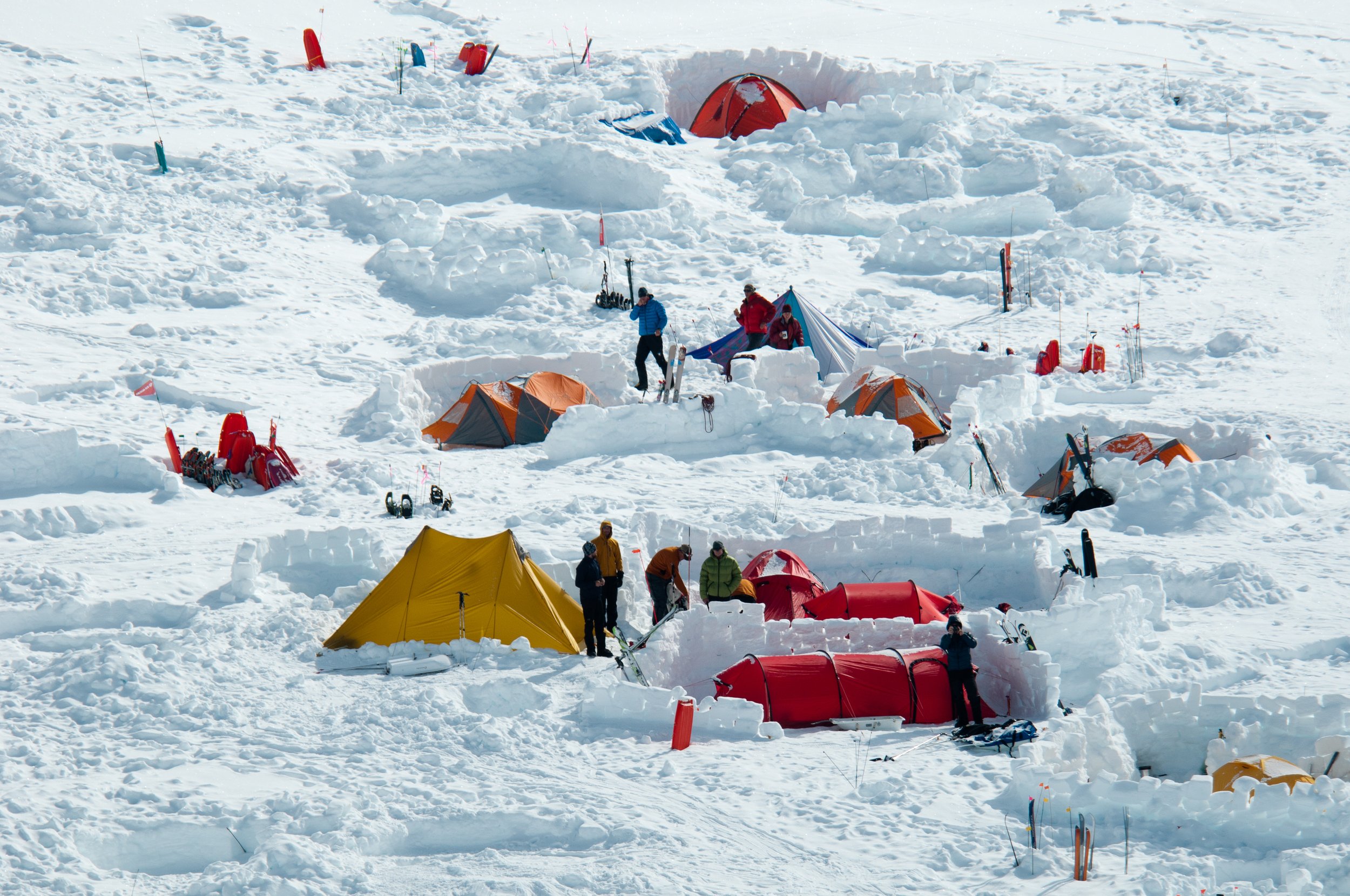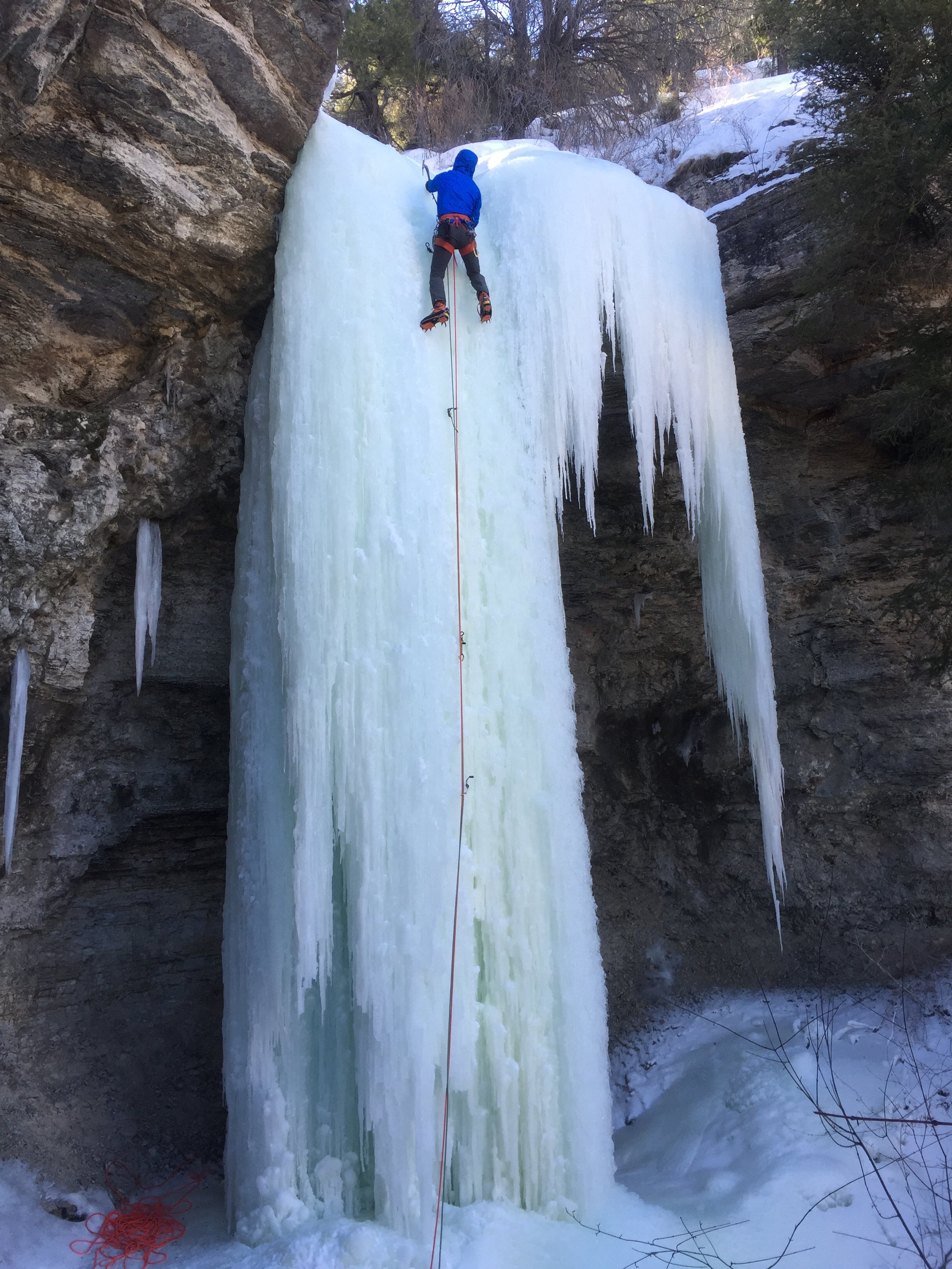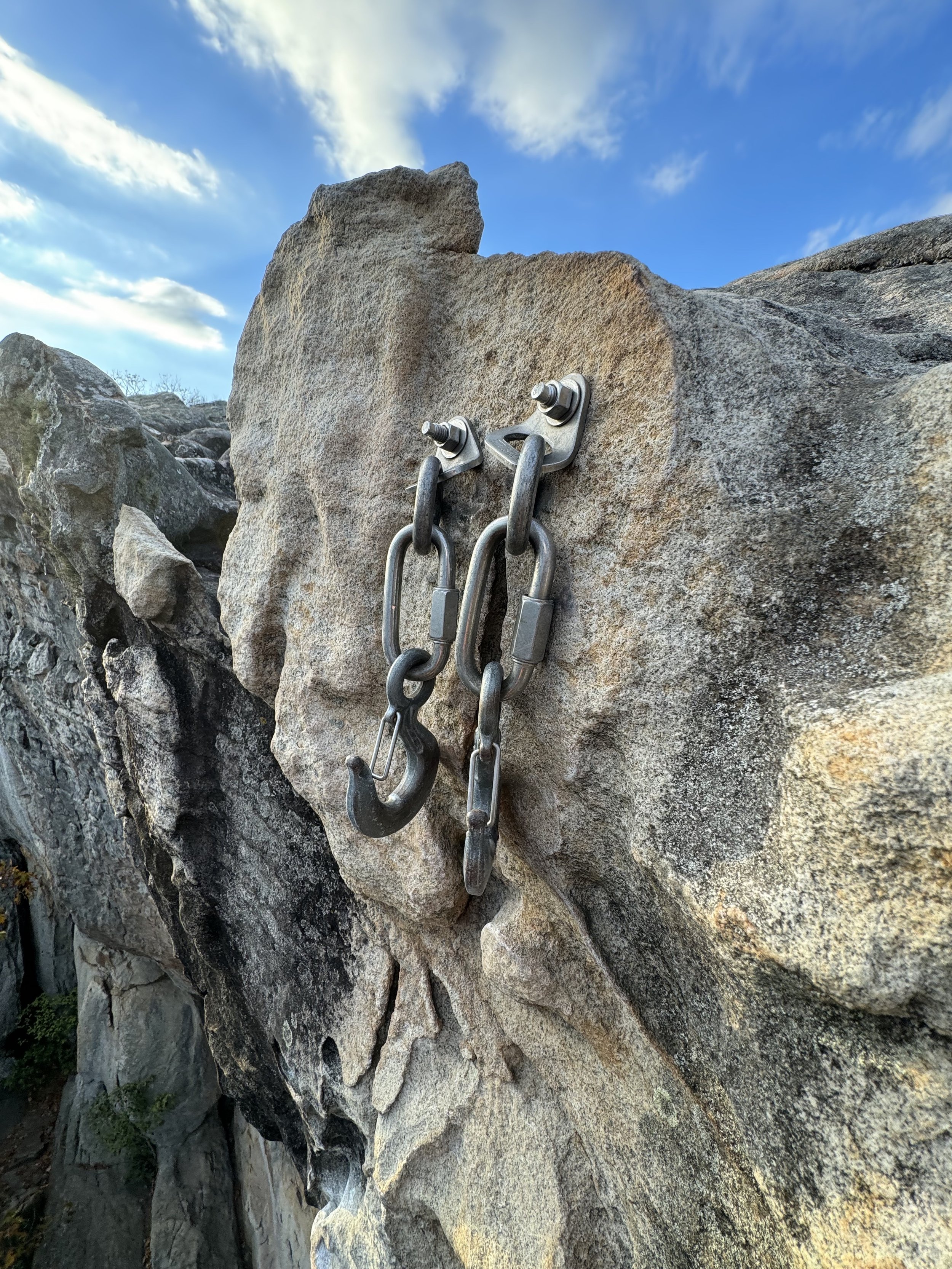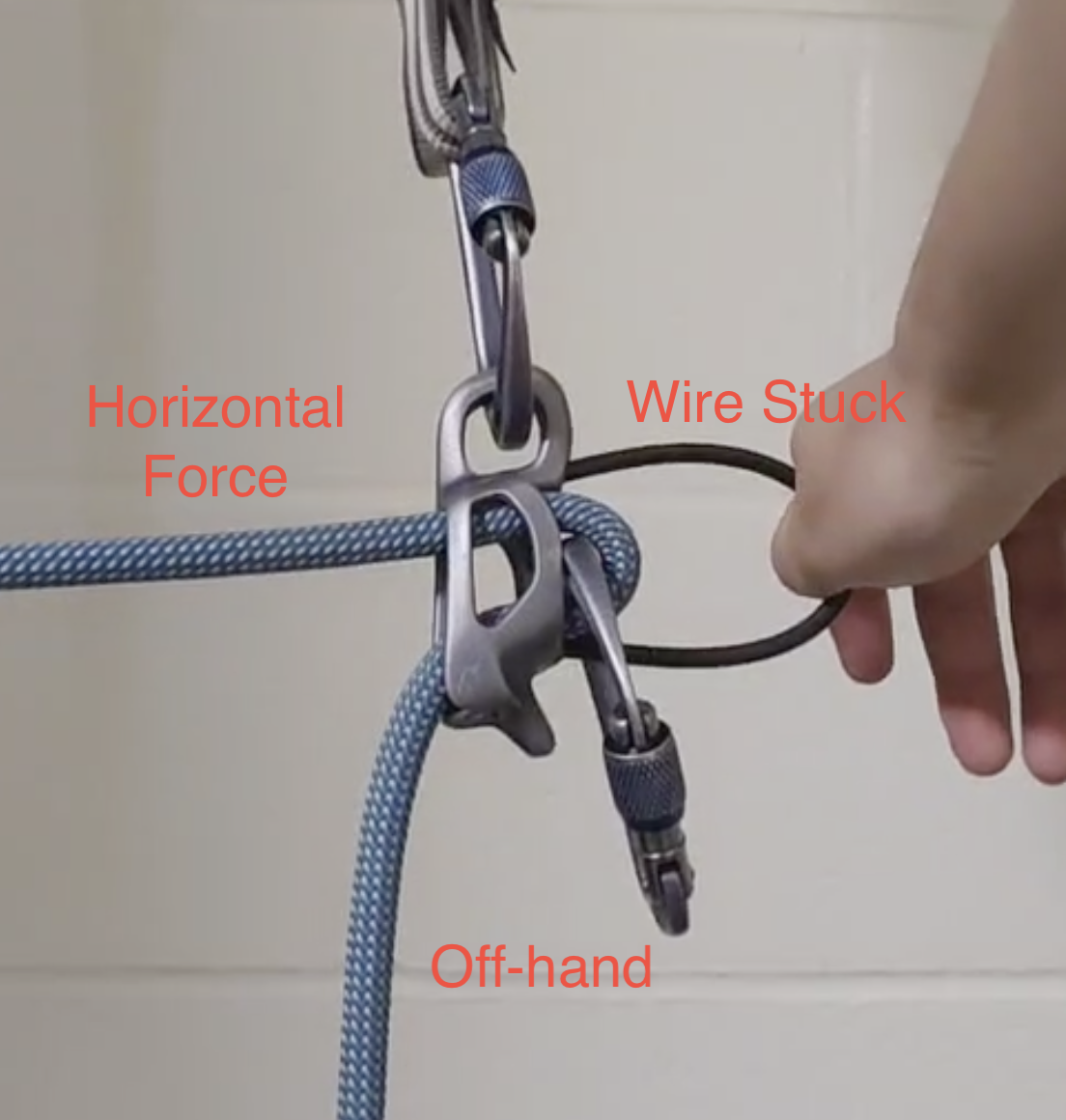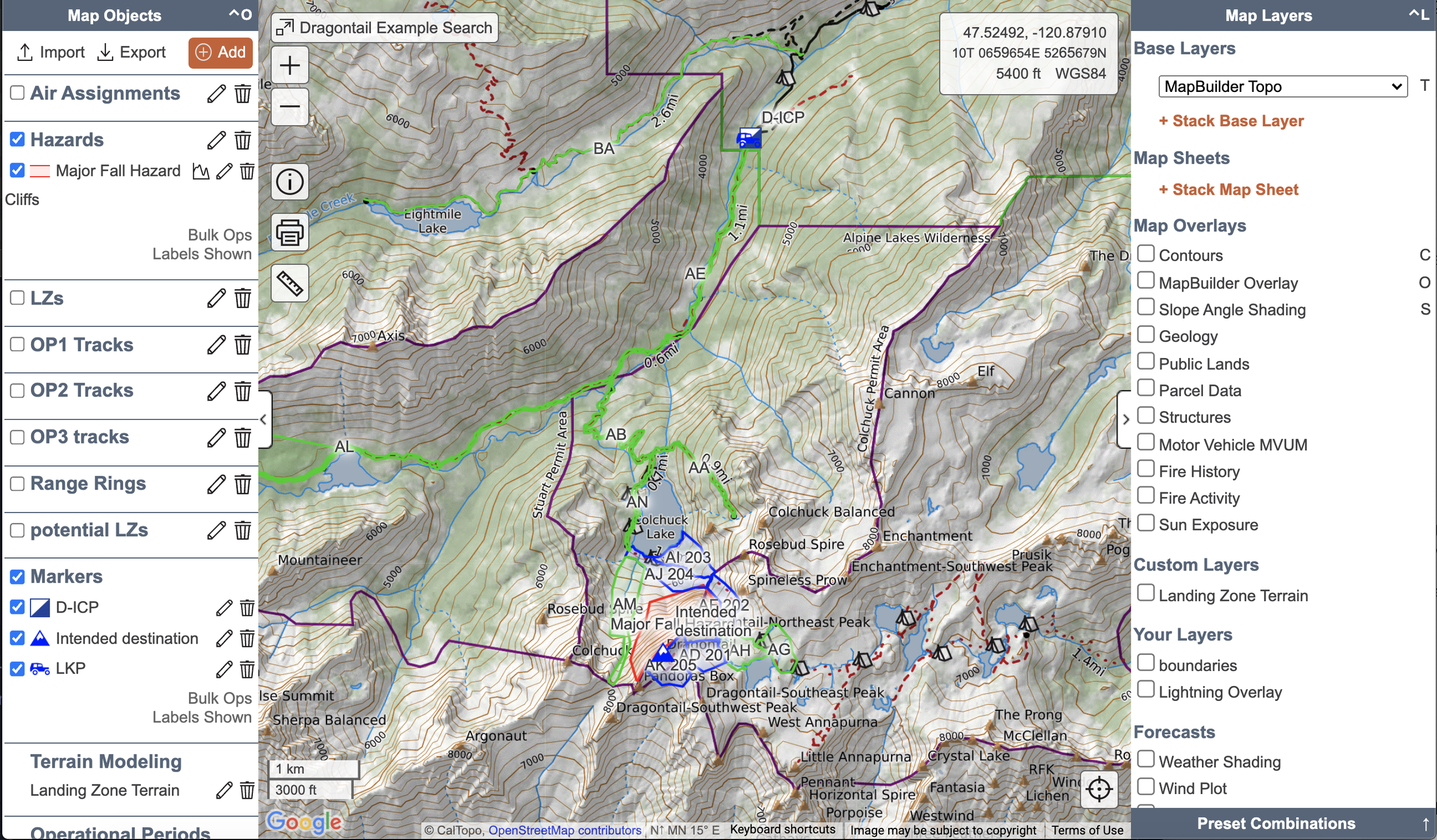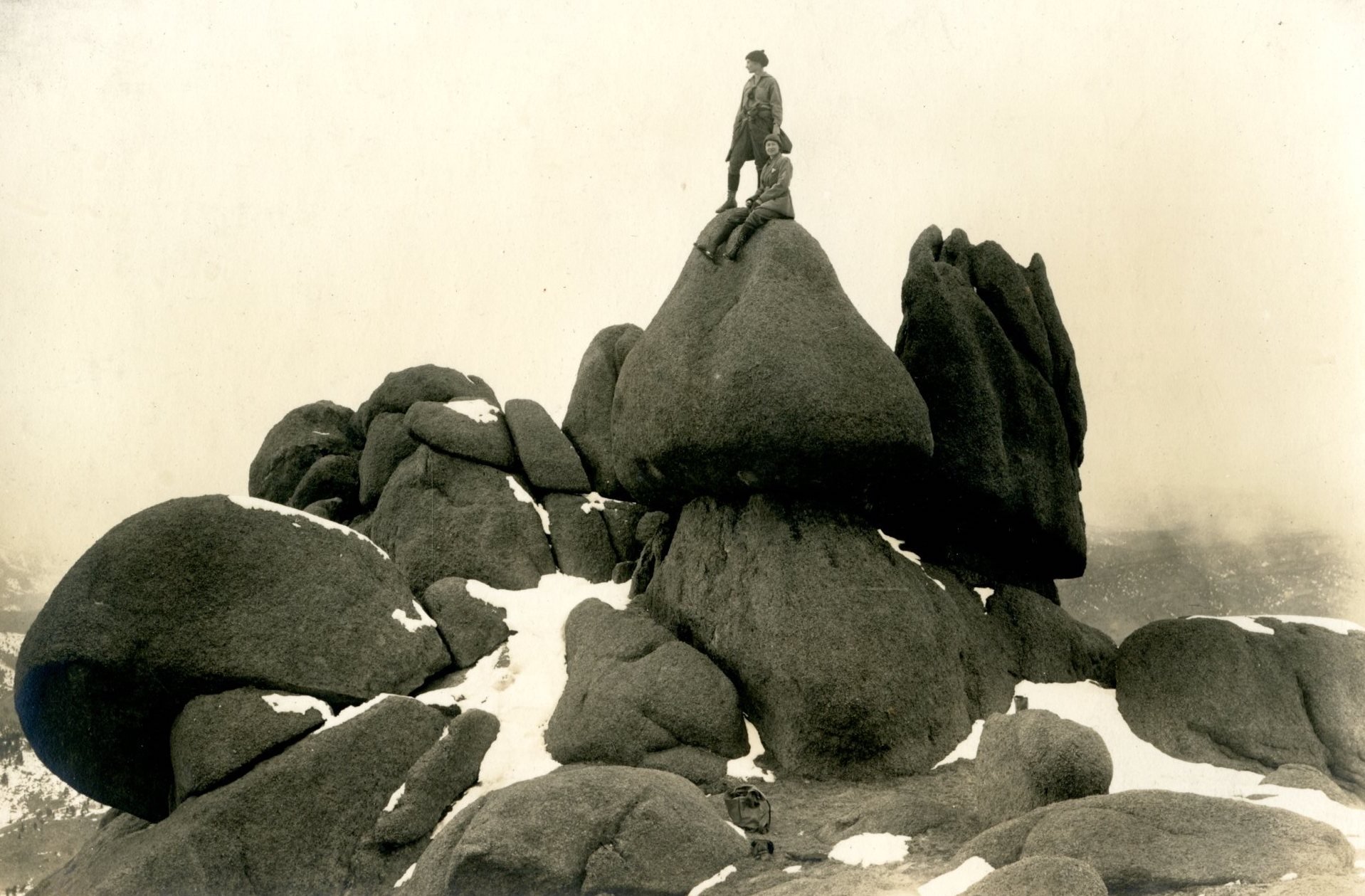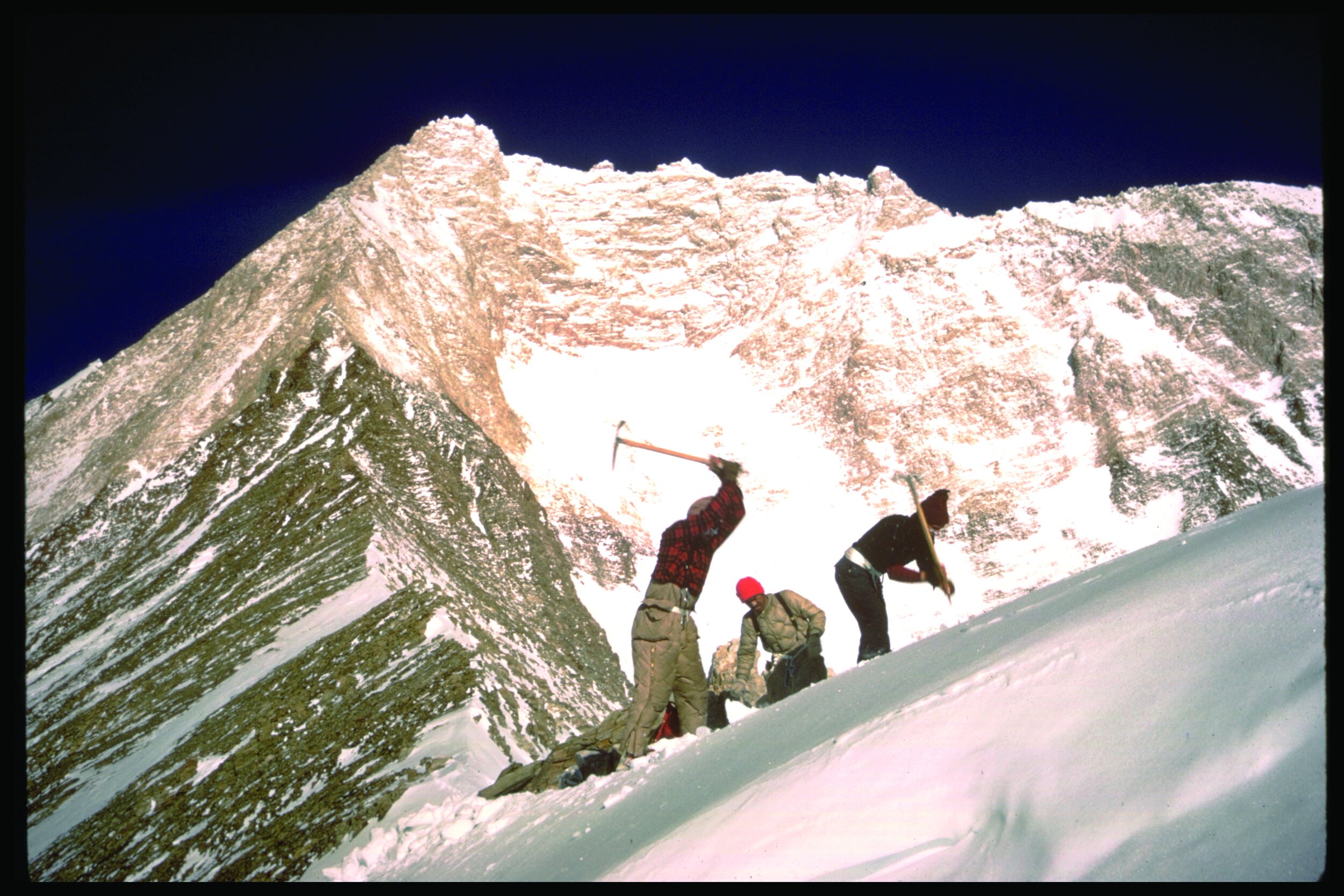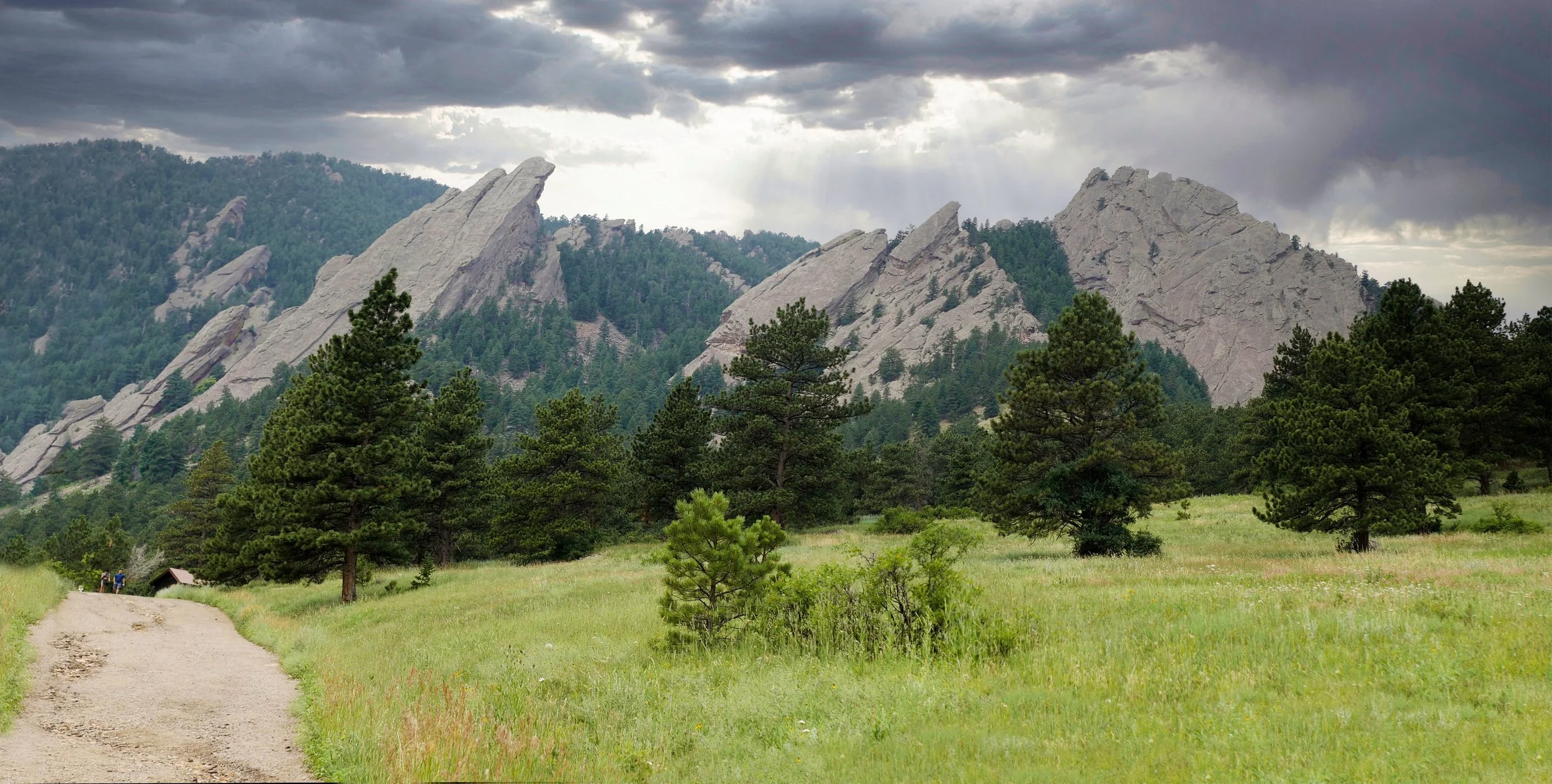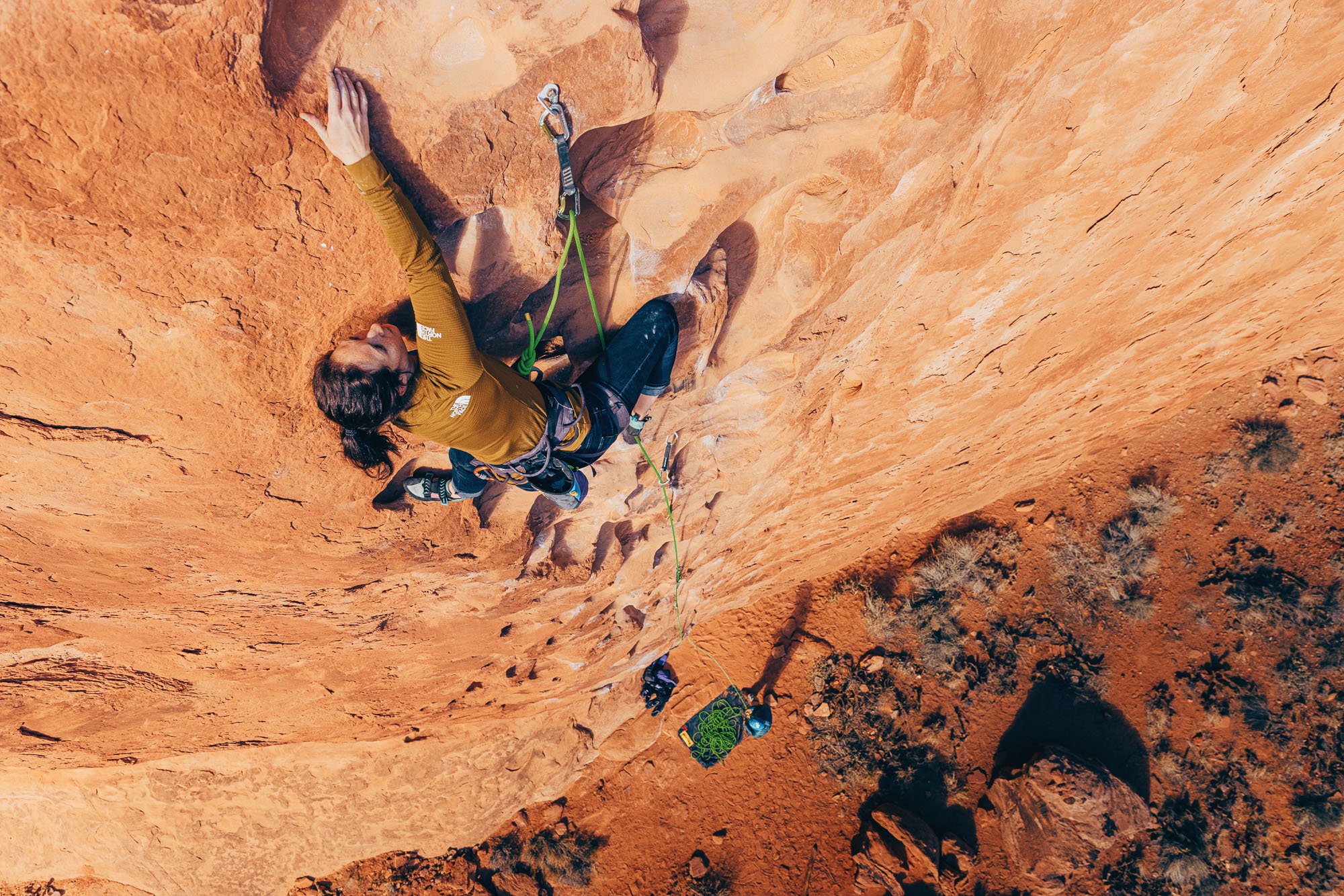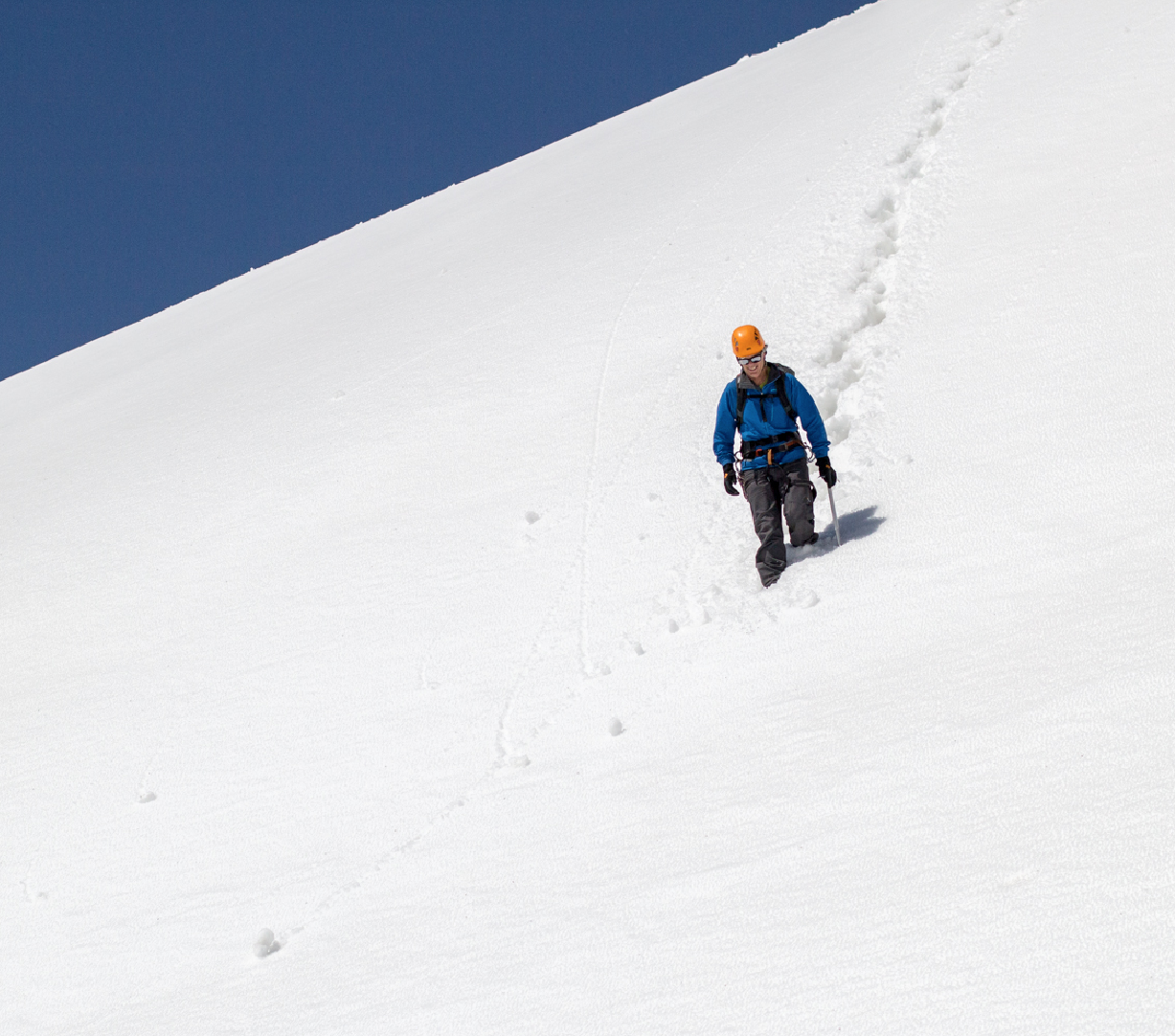Step Kicking
As the angle increases, you will find it more comfortable to kick steps straight into the slope. Step kicking straight up the fall line is more strenuous than moving on a diagonal, but it is an effective way to increase your security. If the snow is consolidated but soft enough to kick good steps, you will have a good platform on which to stand. You will also be facing the slope, which is an excellent position from which to perform a quick self-arrest in the event of a slip.
Diagonal Ascent
If the snow is not soft enough to kick good steps, but is too steep for the duck walk, you may wish to make a diagonal ascent, switchbacking up the slope. The standard technique for moving up a steep slope at a diagonal is to employ a crossover step.
When moving up at a diagonal, there will always be a downhill foot (on the side of your body away from the slope) and an uphill foot (on the side closest to the slope). To move up the slope, cross your downhill foot above your uphill foot and then step up. Now bring the other foot around from behind to return to the uphill position. Once you’ve completed this crossover step, you should be in the same position from which you started. You’ll note that when you’re in the awkward crossed position you’re “out of balance.” When you’re in your original position, you’re “in balance.” If you’re using an ice axe to increase stability, it should be on the uphill side of your body and you should only move it when you’re in balance. Only stop to rest when in balance.
If you have trouble keeping track of which position is in balance and which is not, remember that the position that tends to make you face the slope is out of balance, and the one that tends to face you out slightly from the slope is in balance.
In order to change the direction of your ascent, bring your downhill foot up into an out-of-balance step, and then match that foot in a V position with your other foot, creating a duck stance. From there, make an in-balance step and kick a stance with the new uphill foot, pointing in the new direction. Note that the duck stance is always in balance, so it is possible to switch the ice axe from one hand to the other at any time while securely in that stance.
In harder snow you will have to shear each stance by cutting into the slope with a brisk forward swing of your foot, using a combination of the edge and the sole of your boot. In good conditions you should be able to cut your foot into the slope using a single movement. On hard snow you may need to kick several times to cut an appropriate stance.
Effective Crampon Use
In the past, a number of climbing clubs taught that crampon use was “required” for glacier travel. Thankfully this practice is far less common today, but there are still a lot of climbers out there who believe this to be true.
The reality is you should only wear crampons when the conditions require it. Crampons are dangerous. You can stab yourself with them or catch a point on a piece of clothing and trip. Crampons are required only when you walk or climb on firm snow or ice. It doesn’t matter whether you are on a glacier or not. If wearing crampons doesn’t increase your security, you should stow them until the conditions change.
It is common to start a climb early in the morning when snow slopes are thoroughly frozen. In a temperate climate, as the day unfolds, rising temperatures and direct sunlight on the snow can rapidly change frozen snow to soft snow or mush. Recognize when crampons are no longer needed and take them off.
When wet snow begins to ball up on the bottom of a crampon, the possibility of slipping and falling becomes very real. If the snow is soft enough, consider removing your crampons. In some cases a thin layer of wet snow on top of ice or hard snow makes crampons essential. For this reason mountaineers should always employ crampons equipped with anti-bot plates. These plastic inserts help keep snow from balling up between the crampon spikes.
The crampons you choose should be compatible with your boot and should be appropriate for the objective. If you elect to wear crampons with a toe bail or a heel bail/clipper, confirm that the rand/welts on the boot are appropriate for these crampons before you leave for the mountains. Try pulling down on the center bar and pulling the front points side to side. Does the crampon shift or lose contact with the boot, even if the sole is flexed? If the crampons do not fit securely, they must be adjusted or a different crampon/boot combination should be chosen. Never ignore a badly fitting crampon or just hope that it will improve.
Tripping is a significant hazard with crampons, often a result of the frontpoints snagging on clothing or gear. It’s not uncommon to see climbers wearing gaiters on the wrong feet, with the buckles on the inside of the legs—this provides a prominent place for a frontpoint to catch, causing a stumble. Be sure extra crampon straps are tucked away and that—if not wearing gaiters—the cuff of your pants has a low profile. (Many modern mountaineering pants have grommets to attach elastic cords that run under the boots, eliminating the need for bulky gaiters.)
Once you put on your crampons, you should continually focus on good technique, using thoughtful and controlled steps. Running down a slope, climbing while tired, or stepping out of balance are all good ways to either trip or stab yourself with a crampon point.
French Technique (Flat Foot)
French technique is the art of flexing the ankle so provide purchase for all of the crampon points on the bottom of your boot. Most modern crampons have 10 points on the bottom and two frontpoints on each toe. An individual employing proper French technique will engage all 10 of the bottom points to create a high level of security in the step. This is also referred to as the flat-foot technique or, in French, pieds à plat.
In hard snow or icy conditions the flat-foot technique may be used in combination with both the duck walk and a diagonal ascent. The techniques are the same as described without crampons, with one significant difference: You must flex your ankles sideways so that all of the crampon points bite into the surface.
American Technique (Hybrid or Pied Troisième)





